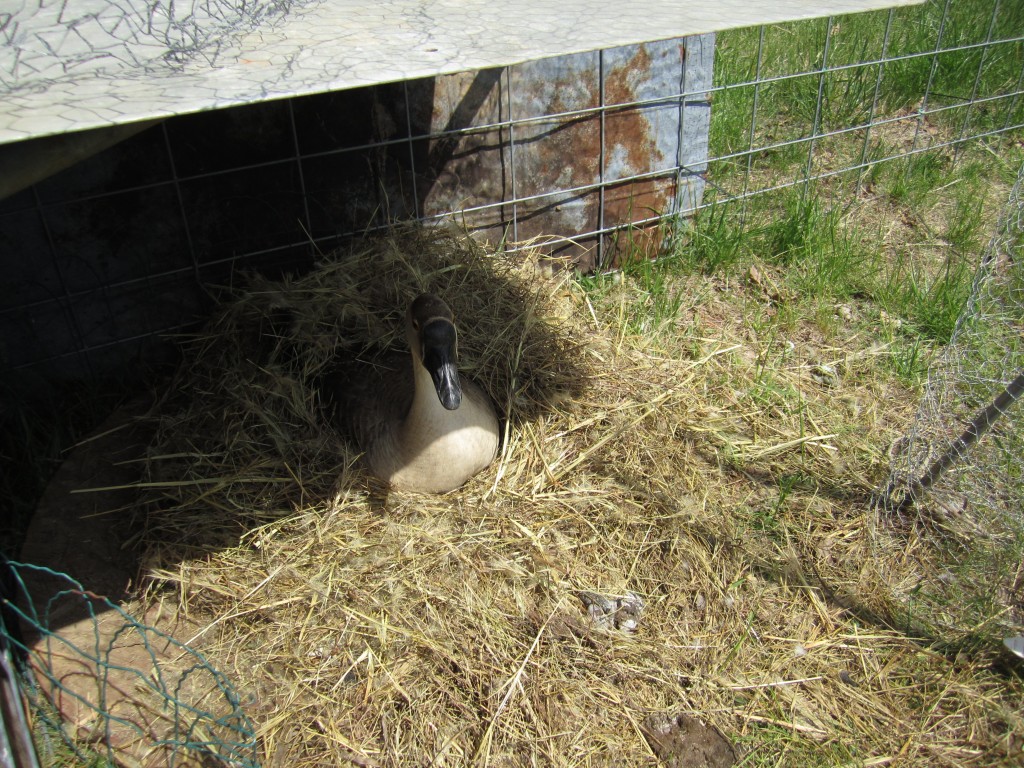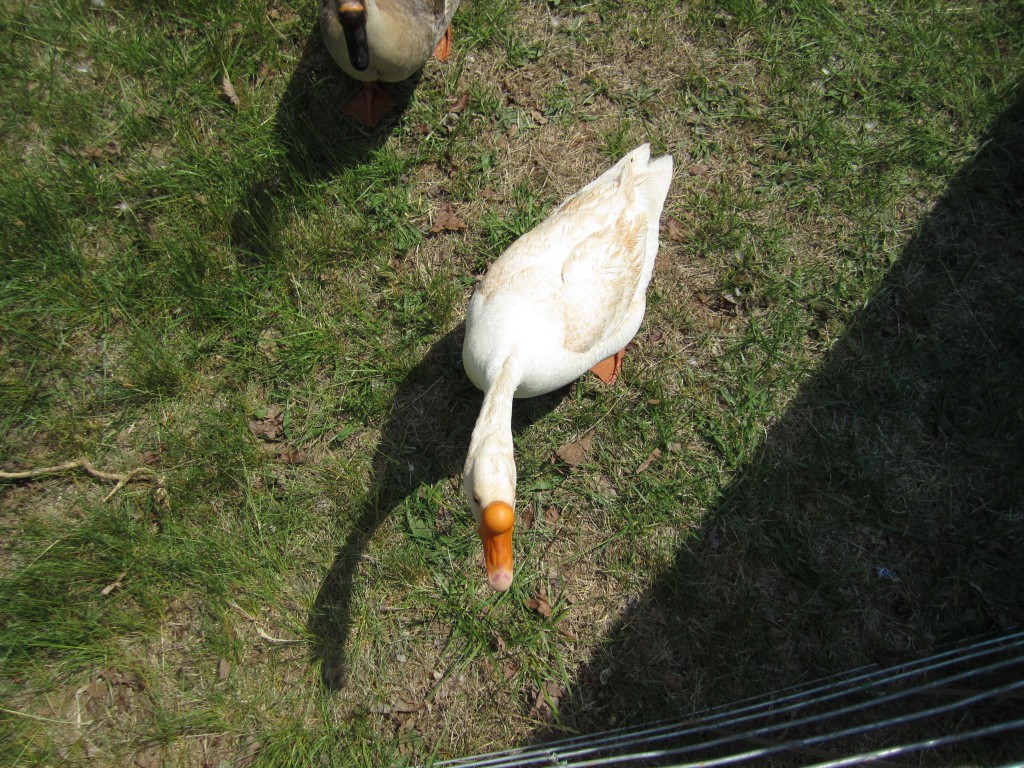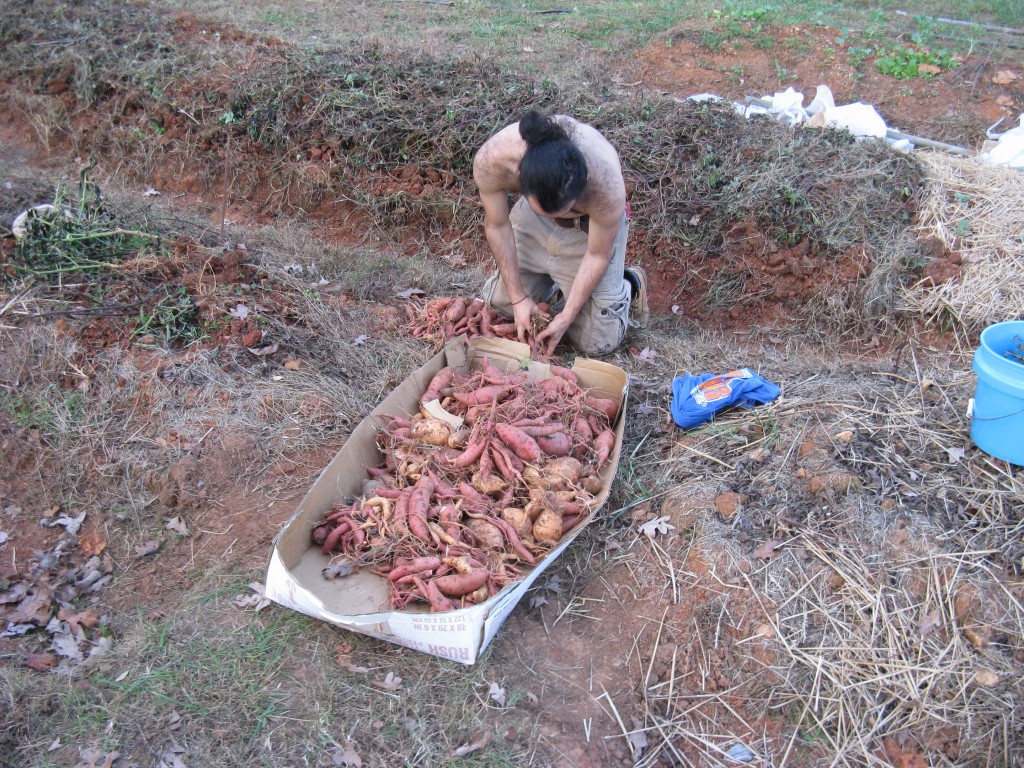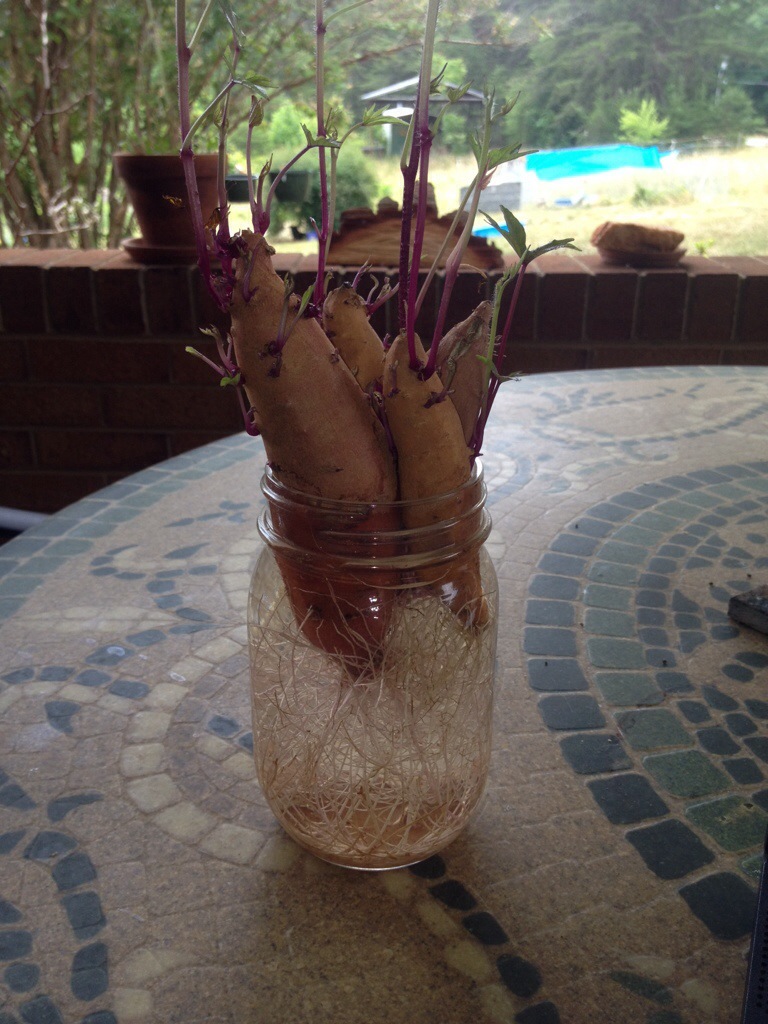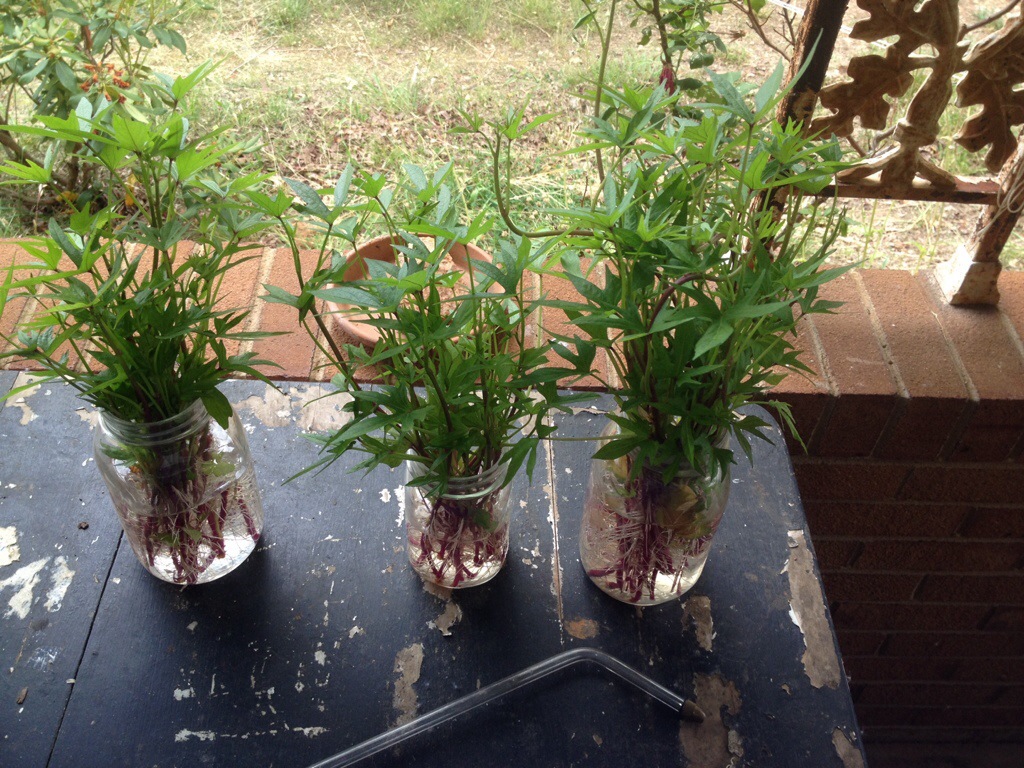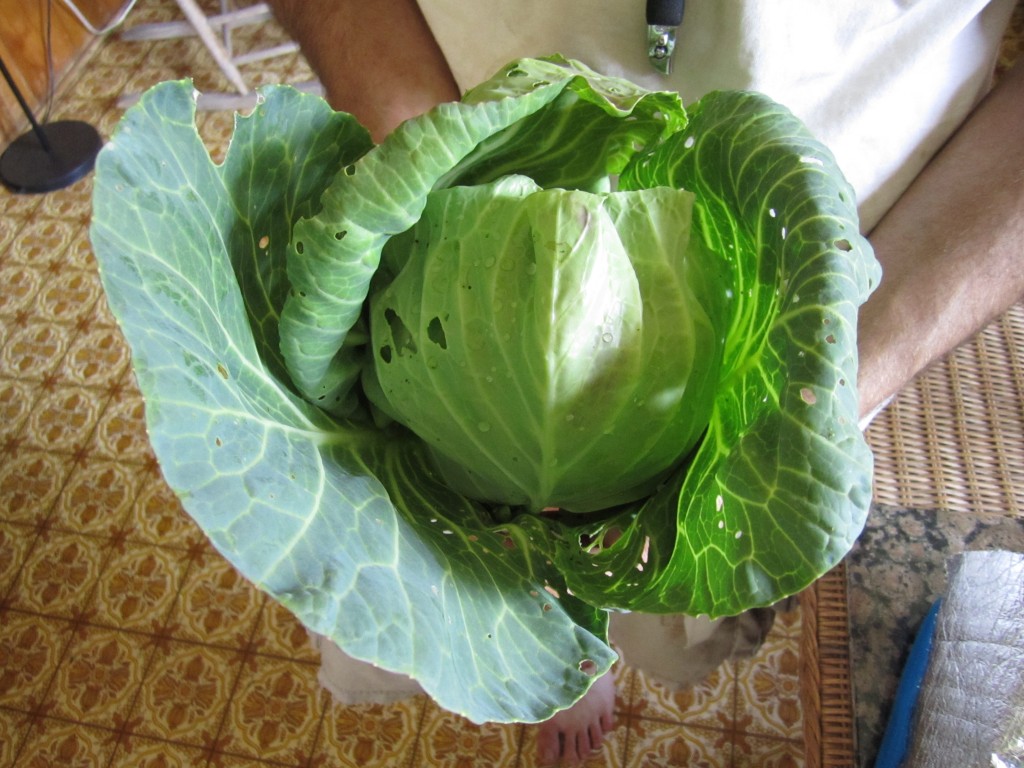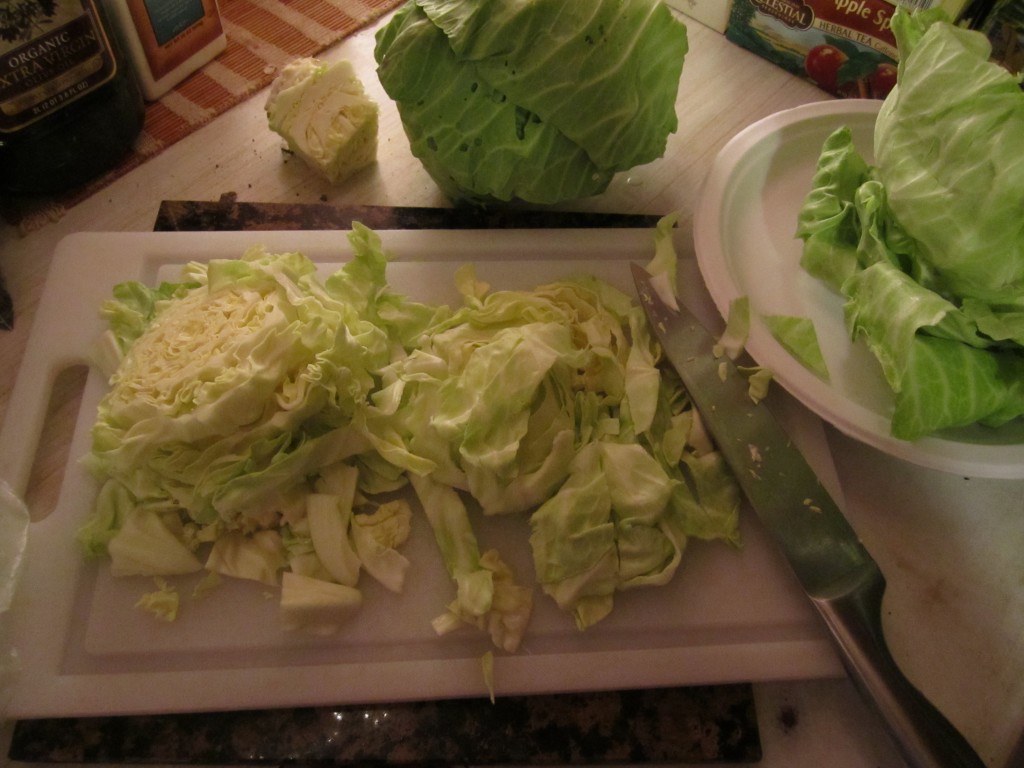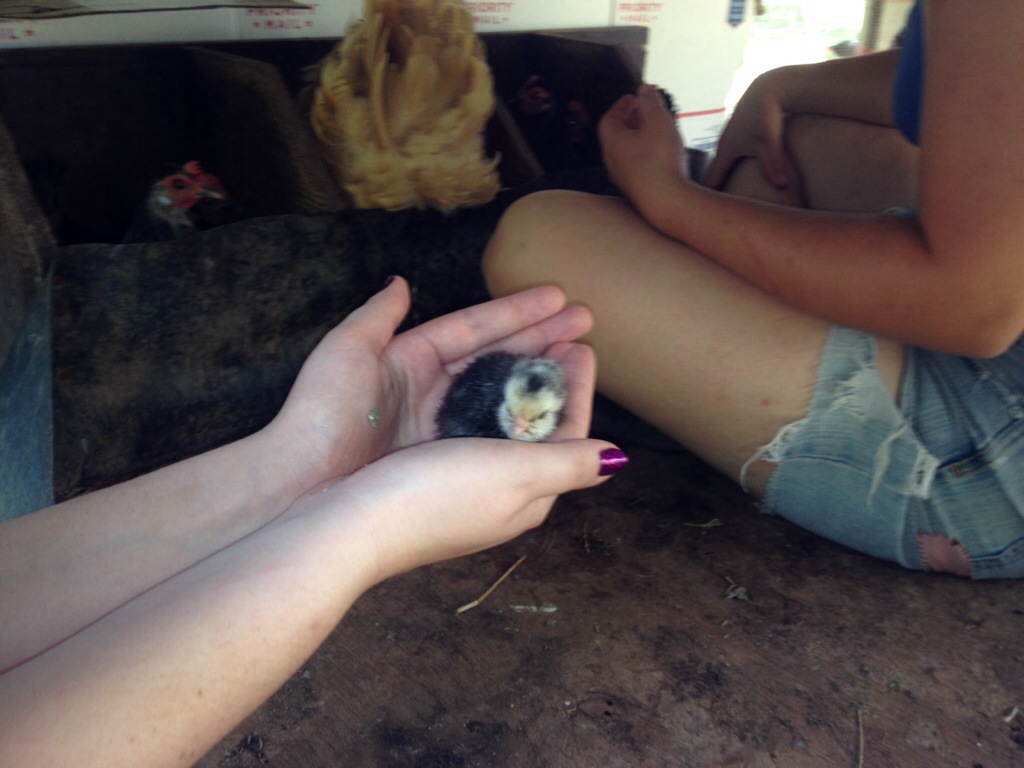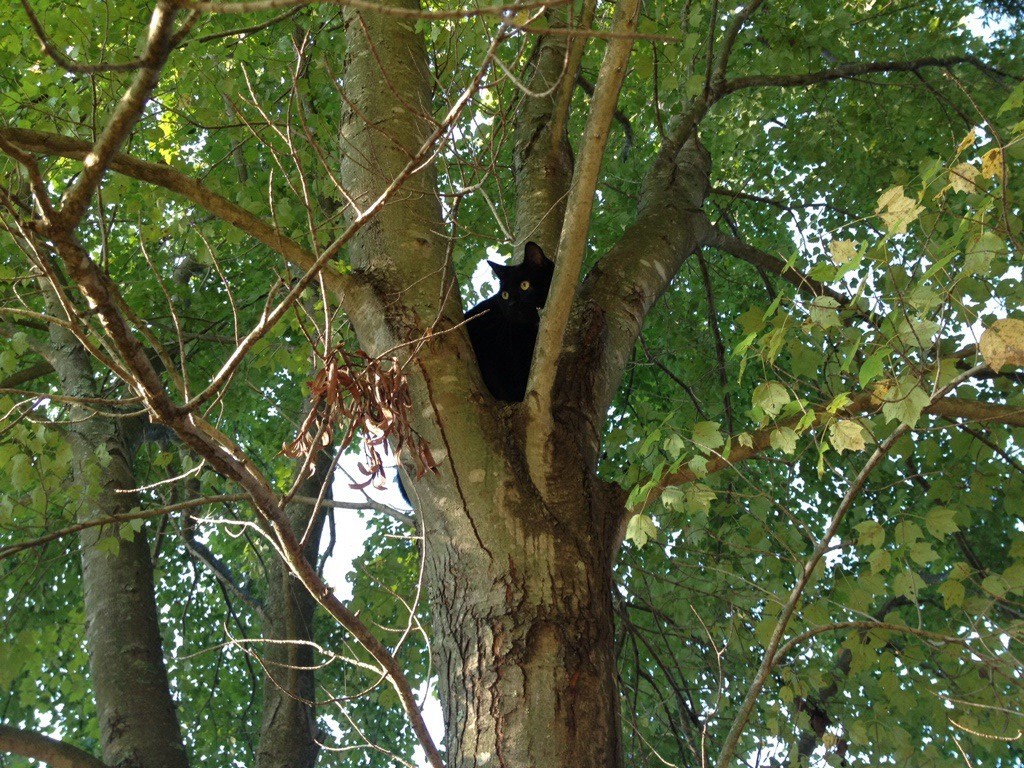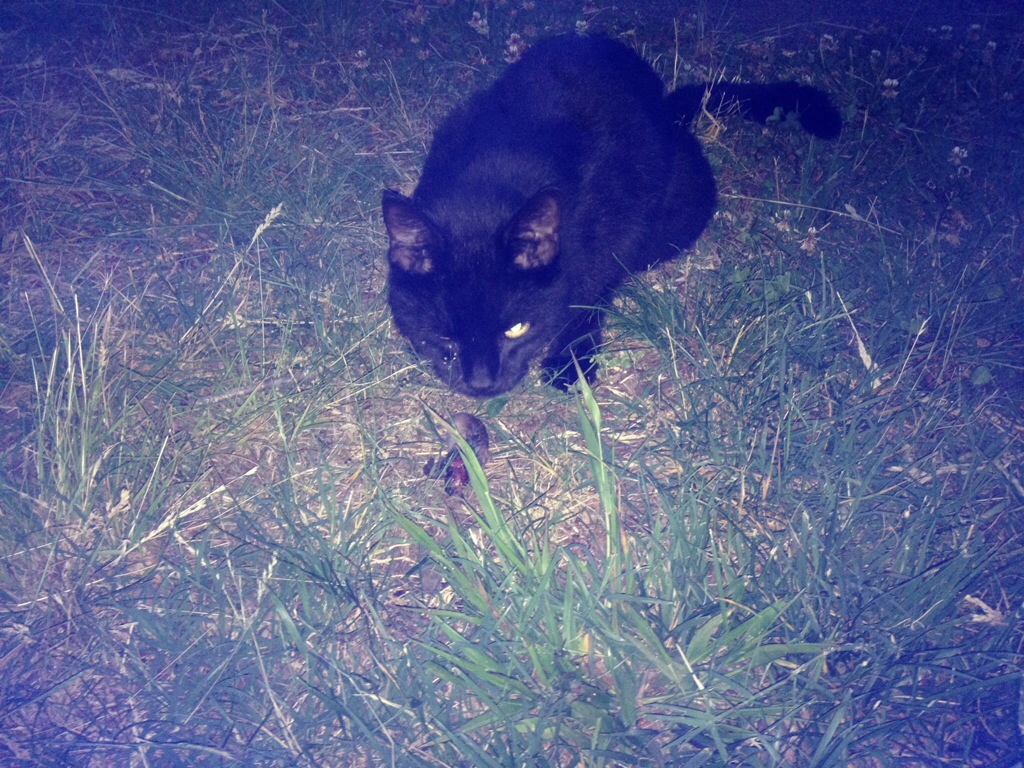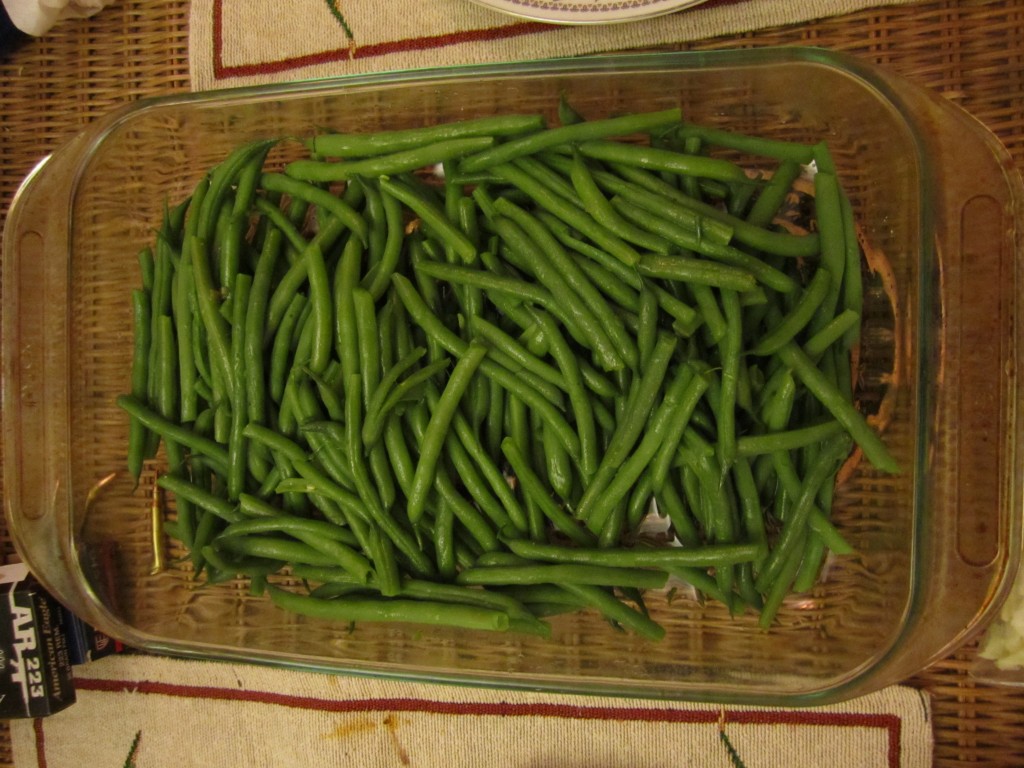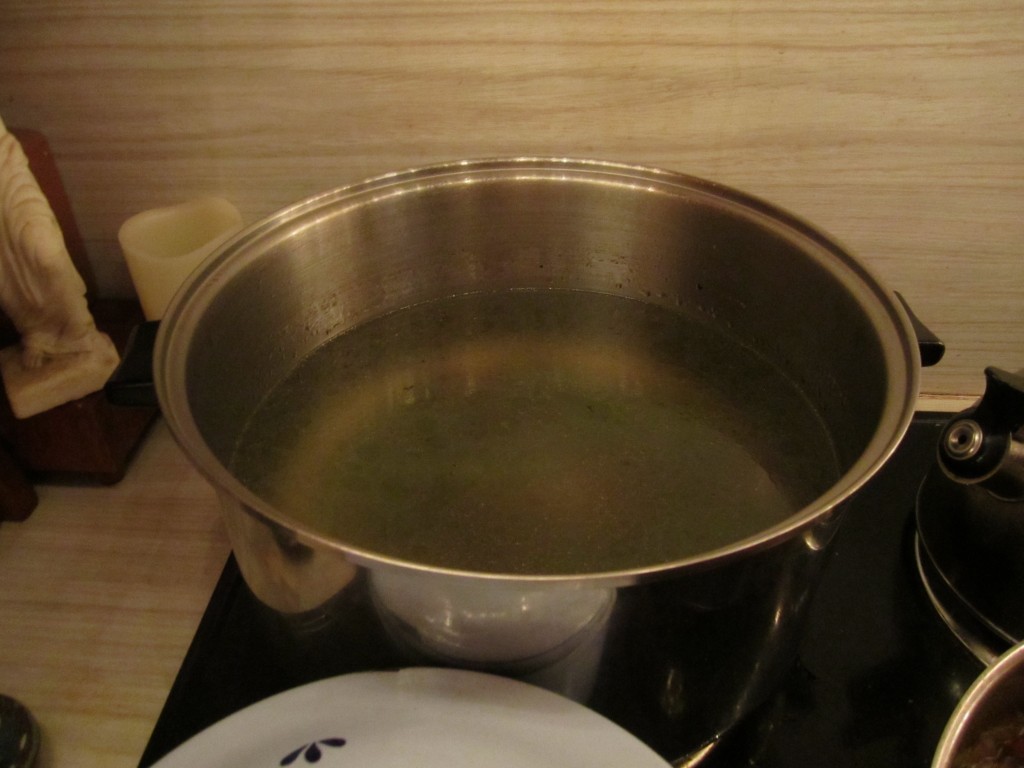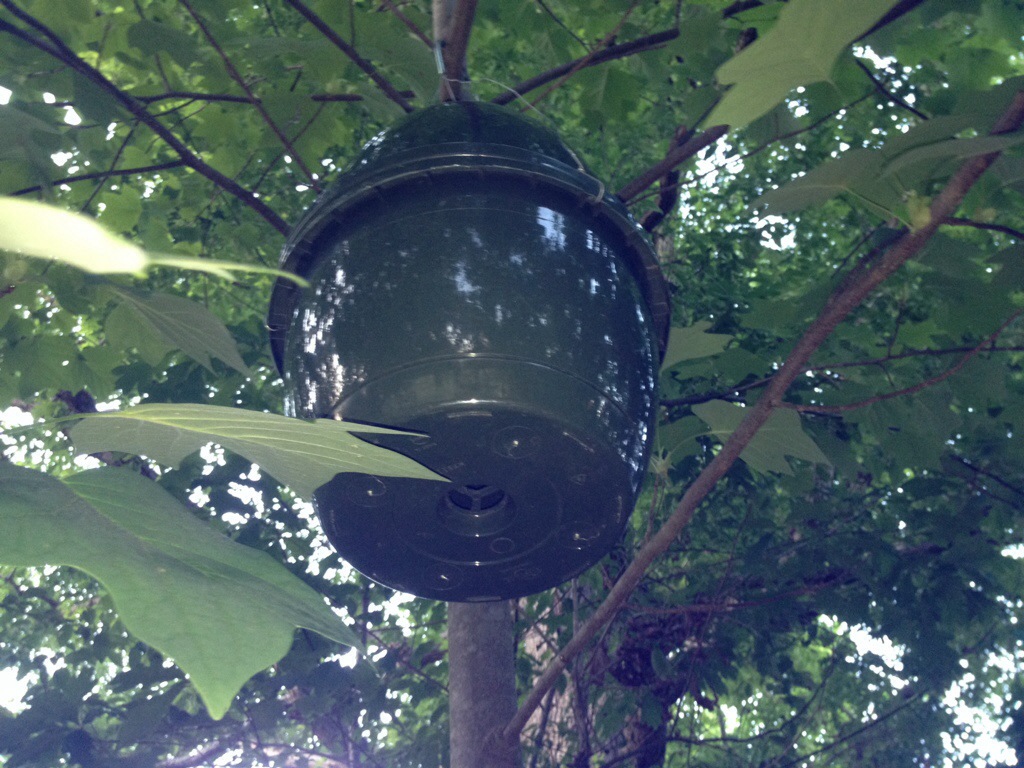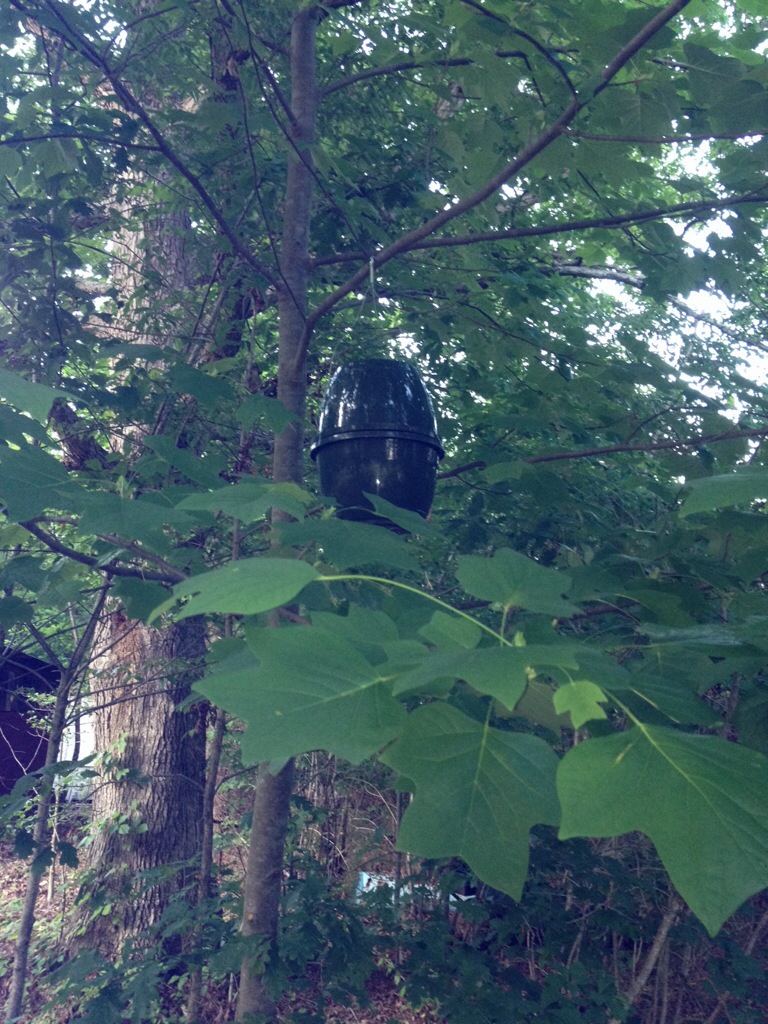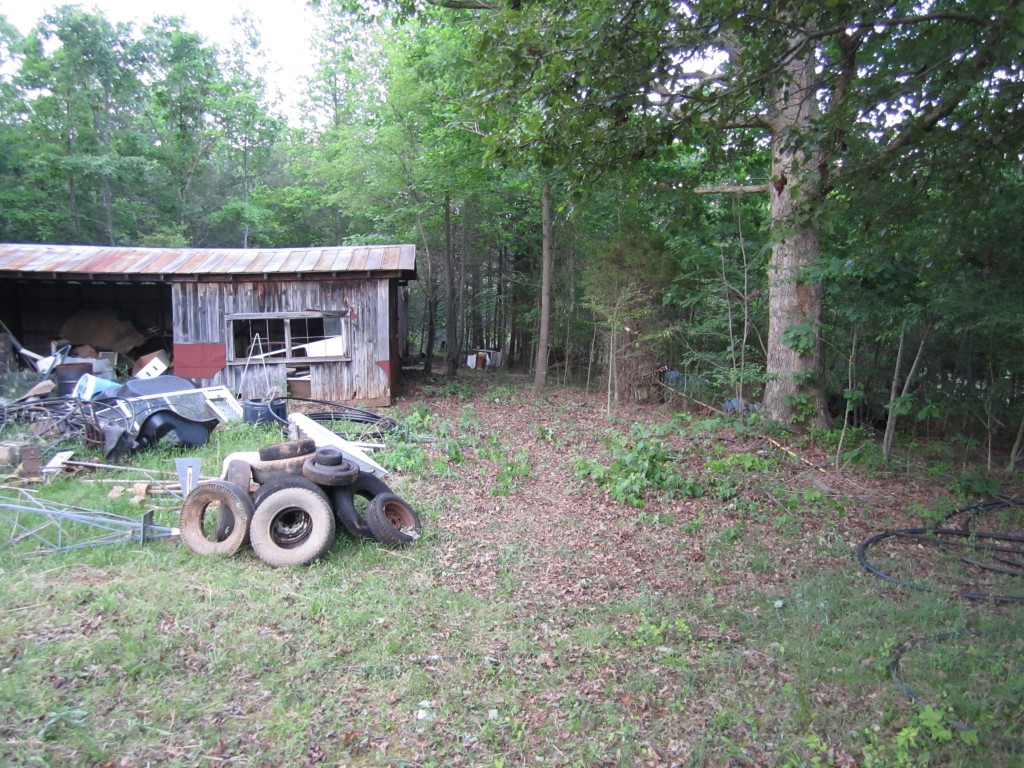we’ve had our geese for a little while now, but still haven’t talked too much about them. i feel like we’re often ranting and rambling about chicken-related activities, and since we both agree that the geese are more entertaining, i’m not sure why we haven’t given more air time to our four-part, feathery flock. here’s a little bit more info about our handsome and hilarious geese:
they finally have names, by the way! our gander is named audobon (nick name: audo), and he is an emden goose. emdens have lovely blue eyes, an array of feathers on their neck that make them appear to be wearing a wavy, ruffley collar. we’ve learned that his breed is generally more friendly and quiet, but he is the first to hiss at bolt if bolt runs up to the cage with too much gusto! right after we got him, he hurt his toe (it seems he ripped his toenail off climbing over and into the kiddie pool), and it took him a little while to heal. we think it helped that he is bigger than the girls and was therefore unable to squeeze through different escape routes that the ridiculous and maddening houdina would find periodically. this means he didn’t spend most of his days wandering all about the yard like the girls did, and his relative immobility likely helped the healing process. i also noticed that his healing toe was grayish, even after we put some antiseptic on it, and it wasn’t until the gray was completely gone (which happened after a few days of wet, heavy, constant rain) that he seemed to completely recover. anyway, i super enjoy audo, as he is a true gentleman and really the only goose that will let you pet him (unless one is collected by ambush and forced into a petting!).
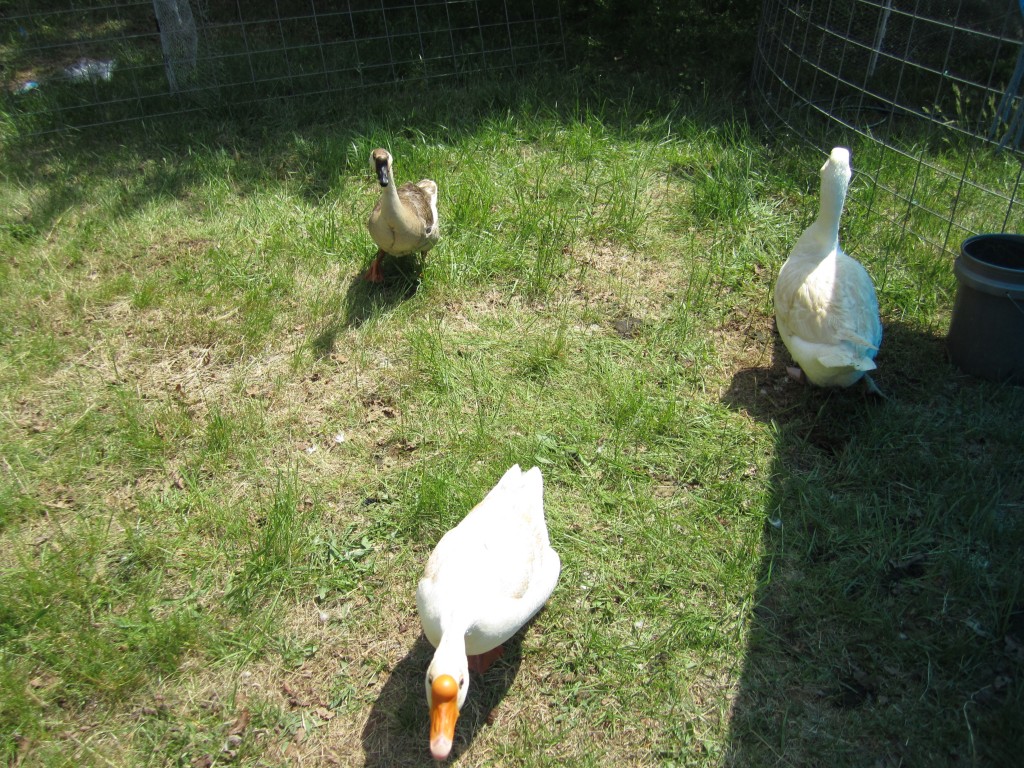
from left to right: houdina (an african), china (a chinese), and audo (an emden) as he walks away, bored with us.
our two african geese are named houdina, a name that represents the fusion of her escape artistry (like houdini) and her thinking-outside-the-box nature (like my mother), and iza, a motherly and solid (neanderthal) character in one of our favorite book series, earth’s children series. our white chinese goose, also a female, is named china (pronounced chee-na) due to a memory that jason and i have from our time spent in peru. for more about the not-so-p.c. origin of china‘s name, you’ll have to shoot us a comment. african and chinese geese are much more vocal than emdens and although still friendly, less inclined to come over for human attention. the folks that we bought our flock from told us that audo and one of the africans had bonded as mates, and while he would breed with all of the geese, he and his mate would be the main partners in egg-sitting. that seems to have been mostly true, during the short time that the geese were interested in sitting on eggs. all four of them helped each other out, but the most memorable moment was one time when houdina led an escape. she found a way out (as is in her nature) and was followed closely by china. iza followed later on and all three of them had a great time walking around in the yard, snacking and pooping in really inconvenient places. when we later glanced at audo, we saw that he was still inside their cage sitting patiently on an egg in their nest, seemingly unconcerned by girls-night-out. this entertained me to no end!
our chinese goose, china, is by far the most ornery and the smallest. she is also white, and like the african houdina and iza, has a bump on the top of her nose. i would consider china our homestead mascot, actually, right alongside bolt the dog. though she is the smallest, she is the most offended by things (anything, really) and has taken to running at you with her nose down as through she plans to snow plow you out of existence. when this first happened to us, we were a little freaked out (would the lot of them flog us…?) but once we realized she was just bluffing it quickly became comical. endearing, actually. if she actually follows through with getting over to me, she’ll simply and gently bump me with her beak or have a dainty little taste of my outfit. she is definitely my favorite, and acts like everyone’s big sister. she also has blue eyes, although they are more gray-blue than audo‘s.
now that you know about their personalities, there is only one more thing to mention… the noise! it is honestly impossible to talk over them when they are honking for food. much louder than a dog’s bark, their tone is such that it not only covers up other noises, it cancels them out, like a high tech noise-canceling device. but, more on this later when we have a video to share!
.:.
